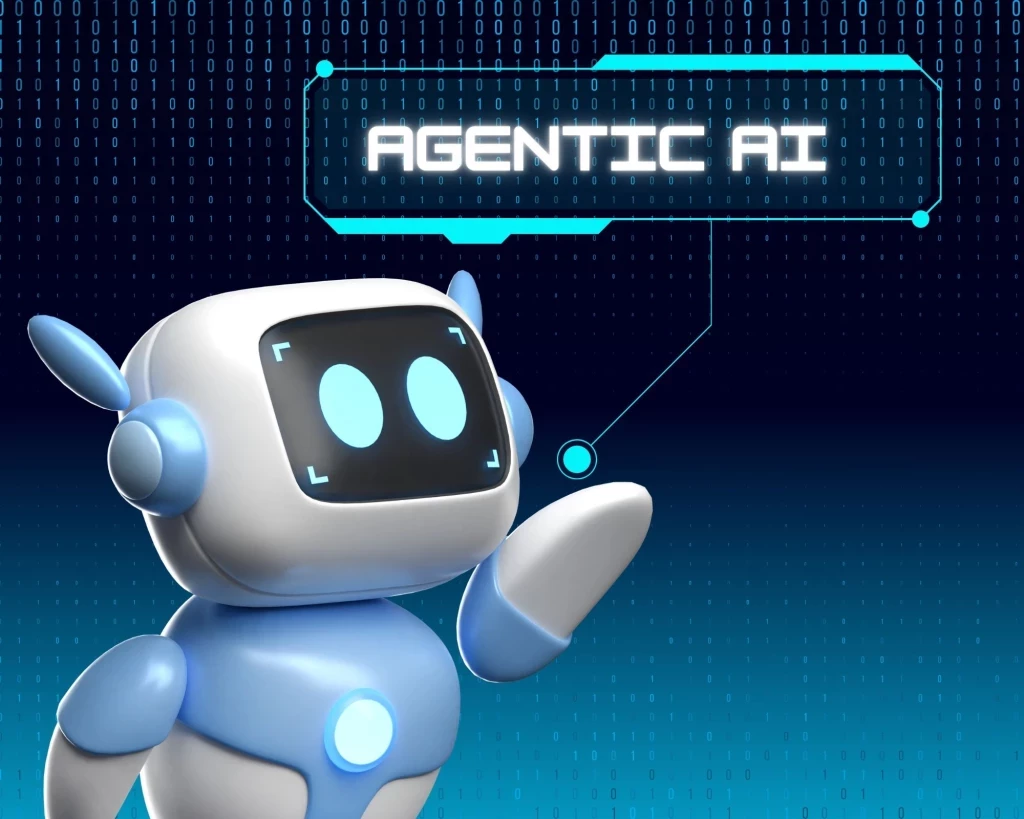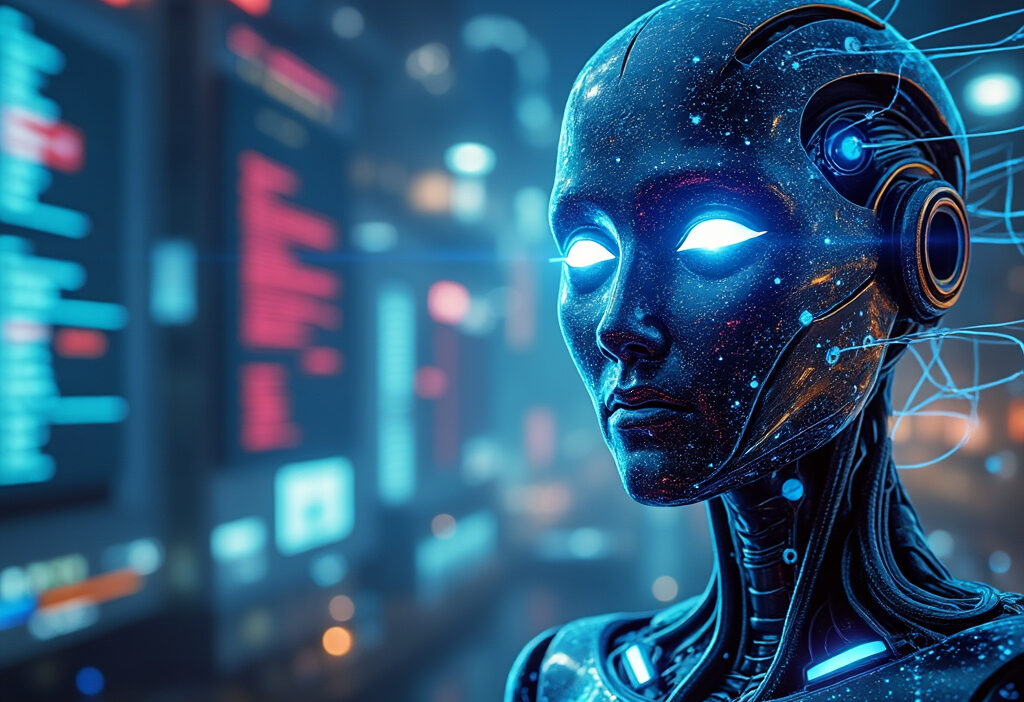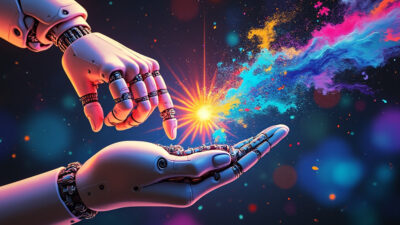Agentic AI The Rise of Autonomous Systems That Think and Act
Agentic AI represents a groundbreaking shift in artificial intelligence, where systems not only perform tasks but make autonomous decisions. This article delves into the evolution, applications, and implications of these intelligent agents, offering insights into how they’re reshaping industries from healthcare to cybersecurity. Discover the technologies powering Agentic AI and the ethical considerations they bring to the forefront.
Understanding Agentic AI
Agentic AI represents a paradigm shift in artificial intelligence, moving beyond static rule-based systems to dynamic entities capable of independent reasoning and action. Unlike traditional AI, which relies on predefined algorithms and structured data inputs, Agentic AI operates with a degree of autonomy, making decisions in real-time based on its environment and objectives. It also differs from robotic process automation (RPA), which automates repetitive tasks without adaptability or learning capabilities. Agentic AI, by contrast, learns, adapts, and evolves its strategies over time.
At its core, Agentic AI is defined by three key capabilities: perception, reasoning, and action. Perception involves interpreting data from sensors, databases, or real-world interactions. Reasoning allows the system to analyze this data, weigh options, and predict outcomes using advanced techniques like reinforcement learning or probabilistic modeling. Finally, action entails executing decisions, whether through digital outputs, robotic movements, or strategic recommendations. This closed-loop cycle enables continuous improvement, as feedback from actions refines future decisions.
A defining feature of Agentic AI is its ability to operate in open-ended environments, where outcomes are uncertain and rules aren’t rigidly defined. For example, an autonomous supply chain agent might reroute shipments based on weather disruptions, supplier delays, and market demand—all without human intervention. Unlike traditional AI, which requires explicit programming for every scenario, Agentic AI leverages techniques like deep learning and meta-reinforcement learning to generalize from past experiences and tackle novel challenges.
The autonomy of Agentic AI raises important questions about trust and control. While it can optimize processes beyond human capability, its decision-making must align with ethical and operational constraints. Techniques like explainable AI (XAI) and human-in-the-loop oversight ensure transparency, allowing organizations to harness its potential responsibly. As Agentic AI advances, its ability to think and act independently will redefine industries, from healthcare to finance, making it a cornerstone of next-generation intelligent systems.
The Historical Evolution of Agentic AI
The roots of Agentic AI stretch back to the mid-20th century, when pioneers like Alan Turing and Norbert Wiener laid the theoretical groundwork for machines capable of autonomous thought. Turing’s 1950 paper, Computing Machinery and Intelligence, introduced the idea of machines that could mimic human reasoning, while Wiener’s work on cybernetics explored feedback mechanisms that enabled self-regulation—an early precursor to autonomous decision-making. These concepts planted the seeds for what would later evolve into Agentic AI.
The 1960s and 1970s saw the emergence of early AI systems like ELIZA and SHRDLU, which demonstrated limited but meaningful autonomy in language processing and problem-solving. However, these systems were rule-bound and lacked true adaptability. The shift toward more dynamic systems came with advances in machine learning in the 1980s and 1990s, particularly with the development of neural networks and reinforcement learning algorithms. These innovations allowed AI to learn from experience rather than relying solely on pre-programmed rules.
A key milestone arrived in the 21st century with the rise of deep learning, enabling AI to process vast datasets and make increasingly complex decisions. Breakthroughs like IBM’s Watson and DeepMind’s AlphaGo showcased AI’s ability to outperform humans in specialized tasks, marking a shift from reactive systems to proactive, goal-oriented agents. Today, Agentic AI builds on these advancements, integrating real-time learning, contextual awareness, and multi-agent collaboration to operate autonomously in dynamic environments.
From Turing’s theoretical musings to today’s self-improving systems, the evolution of Agentic AI reflects a relentless pursuit of machines that don’t just compute—but think and act independently. The next chapter will delve into the technologies powering this transformation.
Core Technologies Behind Agentic AI
The foundation of Agentic AI lies in a sophisticated interplay of core technologies that enable autonomous decision-making. At its heart, machine learning (ML) empowers these systems to learn from data, identify patterns, and make predictions without explicit programming. Supervised learning allows AI to generalize from labeled datasets, while unsupervised learning helps it discover hidden structures in unlabeled data. Deep learning, a subset of ML, leverages neural networks to process complex inputs like images and speech, enabling Agentic AI to handle high-dimensional tasks.
Natural language processing (NLP) is another critical component, allowing AI to understand, interpret, and generate human language. Techniques like transformer models (e.g., GPT, BERT) enable contextual comprehension, while sentiment analysis and entity recognition refine interactions. This capability is essential for AI agents that communicate with users or parse unstructured data to inform decisions.
Reinforcement learning (RL) is perhaps the most pivotal for autonomy, as it mimics how agents learn through trial and error. By rewarding desired behaviors and penalizing suboptimal ones, RL enables AI to optimize strategies in dynamic environments. Applications range from robotics, where agents learn physical tasks, to algorithmic trading, where they adapt to market fluctuations.
Additional technologies like computer vision and knowledge graphs further enhance Agentic AI’s situational awareness. Computer vision allows systems to interpret visual data, while knowledge graphs provide structured representations of information, improving reasoning.
Together, these technologies create a framework where Agentic AI can perceive, process, and act independently—laying the groundwork for its transformative role in software development and beyond.
Agentic AI in Software Development
Agentic AI is rapidly transforming software development by introducing autonomous systems capable of writing, optimizing, and debugging code with minimal human intervention. Unlike traditional AI tools that assist developers, agentic AI systems take initiative—analyzing requirements, generating solutions, and iterating on feedback independently. These systems leverage the core technologies discussed earlier, such as machine learning and natural language processing, but apply them in dynamic, goal-oriented workflows that mimic human problem-solving.
One of the most impactful applications is in automated code generation. Tools like GitHub Copilot, powered by OpenAI’s models, suggest entire functions or classes in real-time, learning from vast repositories of open-source code. More advanced agentic systems, such as Devin by Cognition Labs, go further—autonomously planning software projects, writing deployment scripts, and even fixing bugs by interpreting error logs. These agents don’t just react; they reason about context, trade-offs, and best practices.
Debugging is another area where agentic AI shines. Systems like Amazon CodeWhisperer and DeepCode analyze codebases to identify vulnerabilities or inefficiencies, often catching edge cases humans might miss. They don’t just flag issues; they propose fixes, test them in sandboxed environments, and validate outcomes.
Beyond individual tasks, agentic AI is reshaping collaboration. AI pair programmers adapt to a developer’s style, while project management agents automate sprint planning by estimating task complexity and allocating resources. The result? Faster development cycles, reduced technical debt, and a shift in human roles—from writing boilerplate to overseeing high-level architecture.
As these systems evolve, they’ll blur the line between tool and teammate, fundamentally redefining how software is built. The next chapter explores how similar agentic capabilities are revolutionizing customer support, creating seamless, intelligent interactions.
Transforming Customer Support with Agentic AI
Customer support has long been a critical yet resource-intensive function for businesses, but Agentic AI is transforming it into a seamless, highly efficient operation. Unlike traditional chatbots that follow rigid scripts, autonomous AI agents leverage advanced reasoning, contextual understanding, and adaptive learning to deliver human-like interactions. These systems don’t just respond—they think, analyze, and act in real time, resolving complex queries with unprecedented accuracy.
One of the most significant advancements is in response quality. Agentic AI systems process vast amounts of customer data—past interactions, purchase history, and even sentiment analysis—to craft personalized, context-aware replies. For example, an AI agent can detect frustration in a customer’s message and escalate the issue proactively, or suggest tailored solutions based on previous behavior. This reduces the need for human intervention while improving satisfaction.
Efficiency gains are equally transformative. Autonomous support systems handle multiple queries simultaneously, reducing wait times from minutes to seconds. They also integrate with backend systems to perform actions like processing refunds, updating account details, or scheduling appointments—all without human oversight. Companies like Zendesk and Intercom are already deploying such AI agents, reporting up to 40% faster resolution times and 30% cost reductions.
Moreover, these systems continuously learn from interactions, refining their decision-making over time. Unlike static rule-based bots, Agentic AI adapts to new scenarios, ensuring long-term scalability. As businesses increasingly prioritize automation, the shift from reactive chatbots to proactive, autonomous AI marks a new era in customer support—one where speed, precision, and adaptability redefine service excellence.
This evolution sets the stage for broader enterprise adoption, where Agentic AI will further streamline workflows, as explored in the next chapter.
Agentic AI in Enterprise Workflows
Agentic AI is revolutionizing enterprise workflows by automating routine tasks, enabling businesses to operate with unprecedented efficiency and precision. Unlike traditional automation, which follows rigid, predefined rules, Agentic AI systems think and act autonomously, adapting to dynamic environments and making real-time decisions. These systems are transforming industries by handling repetitive processes—such as data entry, invoice processing, and inventory management—while minimizing human intervention.
One of the most impactful applications is in document processing. Agentic AI can extract, classify, and validate information from unstructured documents like contracts or emails, reducing errors and accelerating approvals. For instance, in finance, these systems reconcile transactions, flag discrepancies, and even initiate corrective actions without manual oversight. Similarly, in supply chain management, Agentic AI optimizes logistics by predicting demand fluctuations, adjusting procurement orders, and rerouting shipments autonomously.
Another critical area is workflow orchestration. Agentic AI coordinates cross-departmental tasks by intelligently routing requests, prioritizing workloads, and ensuring compliance with business rules. For example, in HR, it can streamline onboarding by automatically generating offer letters, scheduling training sessions, and provisioning access to systems—all while adhering to company policies.
The technology also excels in predictive maintenance, where it analyzes equipment sensor data to foresee failures and schedule repairs proactively. This not only reduces downtime but also extends asset lifespans. By integrating with IoT devices, Agentic AI creates a self-regulating ecosystem where machines communicate and resolve issues autonomously.
As enterprises adopt these systems, the focus shifts from manual execution to strategic oversight. Employees are freed to tackle higher-value tasks, while Agentic AI handles the mundane—ushering in a new era of productivity and innovation. The next frontier lies in securing these autonomous systems, a challenge explored in the following chapter on Cybersecurity and Agentic AI.
Cybersecurity and Agentic AI
As enterprises increasingly rely on Agentic AI to automate workflows, the need for robust cybersecurity measures becomes paramount. Agentic AI is revolutionizing threat detection and response by operating autonomously, analyzing vast datasets in real time, and making decisions faster than human analysts. Unlike traditional systems that rely on predefined rules, Agentic AI adapts to evolving threats, learning from past attacks to predict and neutralize new ones before they cause damage.
One of its key advantages is real-time anomaly detection. By continuously monitoring network traffic, user behavior, and system logs, Agentic AI identifies subtle deviations that may indicate a breach. For example, it can detect zero-day exploits by recognizing patterns that deviate from normal operations, even if the attack method is previously unknown. Additionally, it automates incident response, isolating compromised systems, blocking malicious IPs, and deploying patches without human intervention—reducing the window of vulnerability.
Agentic AI also excels in threat intelligence aggregation, synthesizing data from global sources to anticipate attacks. It correlates information from dark web forums, malware repositories, and past incidents to forecast potential threats, enabling proactive defense strategies. Furthermore, its ability to simulate attack scenarios helps organizations stress-test their defenses, identifying weaknesses before adversaries exploit them.
However, the autonomy of Agentic AI raises questions about oversight, a theme that will be explored in the next chapter. While it minimizes human error, its decisions must be transparent and auditable to ensure accountability. As cyber threats grow in sophistication, Agentic AI stands as a critical ally—but its deployment must balance efficiency with ethical safeguards.
Ethical Considerations and Challenges
As Agentic AI systems grow more autonomous, their ability to think and act independently raises profound ethical dilemmas. Unlike traditional AI, which operates within predefined boundaries, Agentic AI makes real-time decisions, often without human oversight. This autonomy introduces critical concerns around privacy, accountability, and misuse, demanding rigorous ethical frameworks to mitigate risks.
One pressing issue is privacy. Agentic AI systems process vast amounts of data to make decisions, potentially infringing on individual rights if not properly regulated. For instance, autonomous surveillance systems could overstep boundaries, collecting sensitive information without consent. Striking a balance between utility and privacy requires transparent data policies and robust encryption, ensuring AI operates within legal and ethical confines.
Accountability is another challenge. When an autonomous system makes a harmful decision—such as a misdiagnosis in healthcare or a biased hiring recommendation—determining liability becomes complex. Is the developer, the deploying organization, or the AI itself responsible? Legal systems must evolve to address these scenarios, possibly introducing AI-specific liability laws that clarify accountability without stifling innovation.
The potential for misuse is equally alarming. Malicious actors could weaponize Agentic AI for cyberattacks, disinformation, or autonomous warfare. The same systems designed to enhance cybersecurity—as discussed in the previous chapter—could be repurposed to exploit vulnerabilities at scale. Preventing misuse demands international cooperation, ethical guidelines, and safeguards like kill switches to deactivate rogue AI.
These challenges underscore the need for proactive governance. Without ethical guardrails, the societal impact of Agentic AI could be destabilizing, setting the stage for the transformative—yet unpredictable—future explored in the next chapter.
The Future of Agentic AI
The future of Agentic AI promises transformative advancements, driven by rapid progress in machine learning, robotics, and decentralized systems. As these systems evolve, they will likely exhibit greater autonomy, enabling them to make complex decisions with minimal human oversight. Current trends suggest breakthroughs in self-improving AI, where systems refine their own algorithms, and multi-agent collaboration, where autonomous entities work in concert to solve large-scale problems. These developments could redefine industries, from healthcare to logistics, by optimizing processes beyond human capability.
Economically, Agentic AI could unlock unprecedented productivity gains. Autonomous systems might manage supply chains, conduct high-frequency trading, or even negotiate contracts, reducing inefficiencies and lowering costs. However, this shift could also disrupt labor markets, displacing jobs while creating new roles centered around AI oversight and collaboration. Society will need to adapt to a world where machines not only assist but initiate actions, raising questions about trust and reliance on non-human decision-makers.
On a societal level, Agentic AI could democratize access to expertise, offering personalized education or medical diagnostics in underserved regions. Yet, the concentration of AI power in the hands of a few corporations or governments risks exacerbating inequality. The ethical challenges discussed earlier—such as accountability—will grow more pressing as systems act with increasing independence.
Looking ahead, breakthroughs in explainable AI and adaptive governance frameworks will be critical to ensuring these systems align with human values. The next chapter will explore how businesses and individuals can prepare for this shift, but one thing is clear: the rise of Agentic AI is not just a technological evolution—it’s a societal transformation that demands proactive engagement.
Preparing for an Agentic AI World
As Agentic AI systems become increasingly autonomous, businesses and individuals must proactively adapt to a world where machines think and act independently. The transition demands strategic preparation across education, policy, and technology to harness benefits while mitigating risks.
For businesses, integrating Agentic AI requires rethinking workflows and decision-making hierarchies. Companies should invest in upskilling employees to work alongside autonomous systems, emphasizing human-AI collaboration rather than replacement. Cross-functional teams combining technical and ethical expertise will be crucial to oversee AI deployments. Additionally, businesses must adopt modular and adaptable IT infrastructures to accommodate rapid advancements in AI capabilities, ensuring scalability and security.
Individuals must prioritize continuous learning to stay relevant. Familiarity with AI fundamentals, ethics, and oversight mechanisms will be essential across professions. Governments and educational institutions should expand AI literacy programs, embedding them in school curricula and vocational training. Lifelong learning platforms must evolve to keep pace with AI-driven changes in job markets.
On the policy front, regulators must strike a balance between innovation and accountability. Frameworks for transparency, liability, and bias mitigation should be established to govern autonomous decision-making. International cooperation will be vital to standardize ethical guidelines and prevent misuse. Policymakers must also address workforce displacement through social safety nets and reskilling initiatives.
Technologically, robust fail-safes and audit trails are non-negotiable. Developers should prioritize explainability in AI models, enabling humans to understand and intervene when necessary. Cybersecurity measures must evolve to counter AI-driven threats, ensuring autonomous systems remain resilient against manipulation.
Preparing for an Agentic AI world is not optional—it’s an urgent imperative. By aligning education, policy, and technology, society can steer this transformation toward equitable and sustainable outcomes.

Conclusions
Agentic AI is setting the stage for a future where autonomous systems play a pivotal role in decision-making across various sectors. While offering immense potential for efficiency and innovation, it also prompts us to navigate ethical and societal challenges carefully. As we stand on the brink of this new era, understanding and adapting to Agentic AI will be crucial for harnessing its benefits responsibly.



